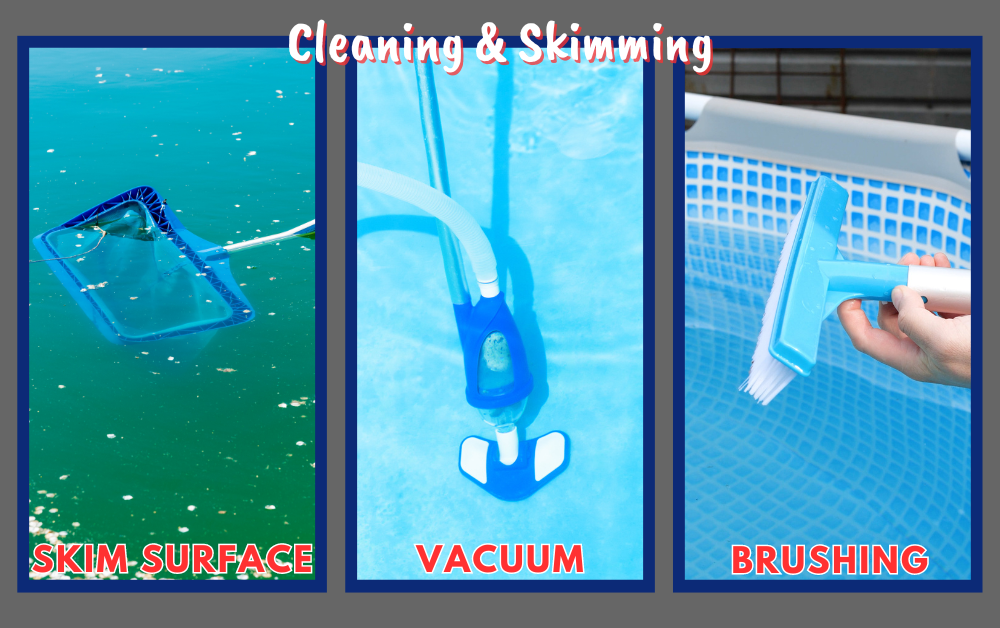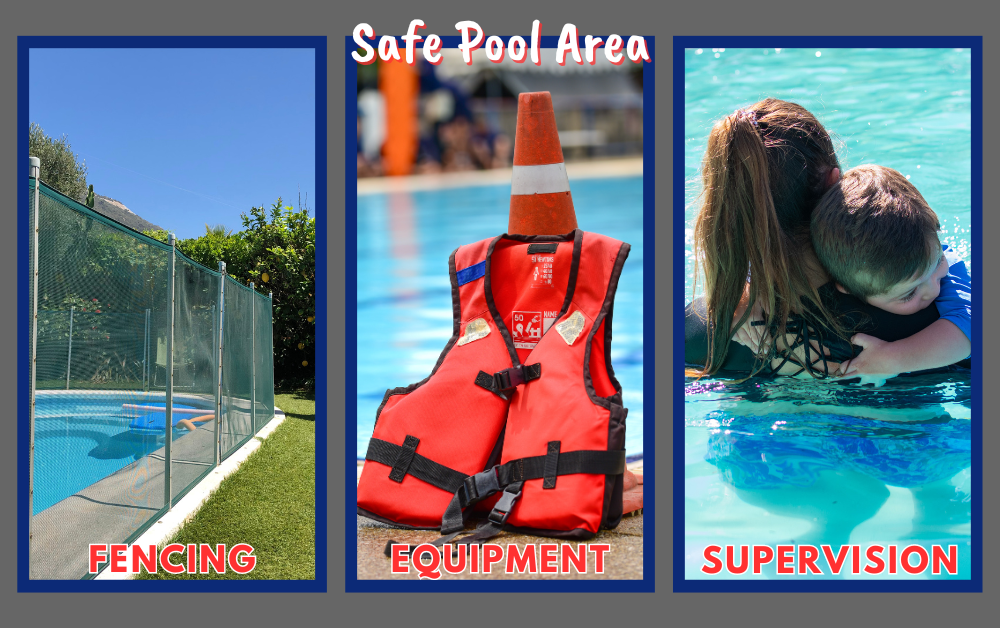Fiberglass pools have gained immense popularity among homeowners for their durability, low maintenance, and aesthetic appeal. If you’re a proud owner of a fiberglass pool or are considering getting one installed, it’s crucial to understand how to properly maintain and care for it to ensure years of enjoyment. In this comprehensive guide, we’ll walk you through everything you need to know about maintaining your fiberglass pool.
Regular Cleaning and Skimming
The first step to maintaining your fiberglass pool is to establish a routine for cleaning and skimming. Keeping your pool clean is essential not only for its appearance but also for the health and longevity of your pool.

1. Skim the Surface Daily
Invest in a good quality pool skimmer and make it a habit to skim leaves, debris, and other contaminants from the surface of the water every day. This seemingly simple task can prevent these debris items from sinking to the bottom and potentially causing staining or clogging the pool filter. A daily skim ensures that your pool remains inviting and safe for swimming at all times.
2. Vacuum the Pool
While skimming takes care of surface debris, a deeper cleaning is necessary to remove dirt and debris that might accumulate on the pool floor and walls. Use a pool vacuum to clean the pool weekly. The smooth surfaces of fiberglass pools make vacuuming relatively easy. Regular vacuuming ensures that your pool stays sparkling clean and free from any build-up of dirt.
3. Brushing
In addition to skimming and vacuuming, regular brushing of the pool walls and floor is essential. Brushing not only removes dirt and debris but also helps prevent the growth of algae. Use a soft pool brush to avoid scratching the smooth surface of your fiberglass pool. Brushing should be done at least once a week to maintain the pool’s pristine appearance.
4. Tile Cleaning
If your fiberglass pool features tile around the waterline, pay attention to its cleanliness. Calcium deposits and mineral buildup can occur over time, detracting from the pool’s aesthetics. Use a tile cleaner and a soft brush to remove any deposits and maintain the visual appeal of your pool’s tilework.
Proper Chemical Balance
Maintaining the correct chemical balance in your fiberglass pool is crucial for water clarity, sanitation, and the longevity of the pool. The water in your pool is not just H2O; it contains various chemicals and minerals that must be managed carefully.

1. pH Levels
pH levels indicate the acidity or alkalinity of your pool water. The ideal pH range for pool water is typically between 7.4 and 7.6. Maintaining pH levels within this range is crucial as it affects the effectiveness of chlorine and the comfort of swimmers. pH levels that are too high can lead to scaling and cloudy water, while pH levels that are too low can cause corrosion and eye irritation. Regularly test and adjust the pH levels as needed to keep your pool water in balance.
2. Chlorine Levels
This is a key component in pool water maintenance as it helps kill bacteria and other microorganisms, keeping your pool water safe for swimming. Chlorine levels should be regularly tested and adjusted to ensure they remain within the recommended range. Factors such as temperature, bather load, and sunlight can affect chlorine levels, so monitoring them is essential. Too little chlorine can result in poor water quality, while excessive chlorine can cause skin and eye irritation.
3. Alkalinity and Calcium Hardness
In addition to pH and chlorine levels, monitoring alkalinity and calcium hardness is crucial. Alkalinity acts as a buffer for pH levels, helping to prevent rapid fluctuations. The recommended alkalinity range is usually 80-120 ppm (parts per million). Calcium hardness, on the other hand, influences water balance and helps prevent water from becoming too aggressive or scaling. The ideal calcium hardness range is typically 200-400 ppm. Regularly testing and adjusting these parameters will help maintain a stable and comfortable swimming environment.
4. Cyanuric Acid (Stabilizer)
Cyanuric acid, also known as pool stabilizer, helps protect chlorine from degradation due to sunlight. It acts as a shield, extending the lifespan of chlorine in your pool water. However, it’s essential to maintain the correct cyanuric acid level, typically around 30-50 ppm, as excessive stabilizers can reduce the effectiveness of chlorine. Regular testing and adjustment of cyanuric acid levels ensure that your pool water remains properly stabilized.
Routine Equipment Maintenance
Your pool equipment plays a crucial role in maintaining water quality and circulation. Neglecting equipment maintenance can lead to inefficiencies and costly repairs down the road.
1. Filter Maintenance
The pool filter is responsible for removing debris and impurities from the water. Over time, the filter can become clogged with dirt and debris, reducing filtration efficiency. To prevent this, clean or backwash your pool filter regularly, as recommended by the manufacturer. In some cases, it may be necessary to replace filter media to ensure optimal performance.
2. Pump Maintenance
The pool pump is responsible for circulating water through the filter and back into the pool. A malfunctioning pump can disrupt the entire circulation system. Regularly inspect the pool pump for leaks, unusual noises, or signs of wear. Lubricate pump o-rings and gaskets as required to maintain a proper seal. Additionally, regularly clean out the pump strainer basket to prevent clogs and maintain efficient water flow.
3. Check the Pool Heater
If you have a pool heater, it’s essential to ensure that it’s functioning correctly, especially if you enjoy using your pool year-round. Proper maintenance of the heater can extend its lifespan and keep your pool at a comfortable temperature. Consult the manufacturer’s recommendations for cleaning and servicing your specific pool heater model. Regular maintenance can help you avoid unexpected cold dips in your pool during the cooler months.
4. Inspect Plumbing and Valves
Regularly check the pool’s plumbing and valves for leaks or damage. The pool’s plumbing system plays a vital role in water circulation, so any issues should be addressed promptly. Leaks can lead to water loss, increased utility bills, and potential damage to equipment. Regular inspection and maintenance of plumbing components ensure the efficient operation of your pool system.
Handling Stains and Algae
Despite your best efforts, you may encounter stains or algae growth in your fiberglass pool. Knowing how to identify and address these issues is essential to maintaining your pool’s pristine appearance.
1. Stain Identification
Stains in your pool can be caused by various factors, including organic materials, metals, and minerals. Properly identifying the type of stain is crucial as different stains may require different treatment methods. Common types of stains include organic stains (caused by leaves, berries, etc.), metal stains (resulting from metal objects or water with high metal content), and rust stains (usually caused by iron deposits).

2. Stain Removal
For organic stains, consider using a pool stain remover or a mixture of water and muriatic acid. Always follow the manufacturer’s instructions and avoid using abrasive materials that could damage the pool surface. Metal stains may require a metal sequestrant to prevent further staining. Rust stains can be more challenging to remove and may require specialized stain removers. Regardless of the type of stain, addressing it promptly will help maintain the visual appeal of your pool.
3. Algae Prevention and Treatment
Growth is a common issue in pools, especially when the water chemistry is not properly maintained. Algae can make your pool water appear green or cloudy and can be unsightly. To prevent algae growth, maintain proper chemical balance, ensure good water circulation, and regularly sanitize your pool. If algae do appear, treat them promptly with algaecides, which are specifically designed to eliminate algae. After treatment, brush the affected areas and run the pool filter to remove dead algae. In the case of persistent or severe algae blooms, you may need to shock your pool with a higher dose of chlorine.
Winterizing Your Fiberglass Pool
If you live in an area with cold winters, it’s crucial to winterize your fiberglass pool properly to prevent damage from freezing temperatures.
1. Lower Water Level
Before winterizing, lower the water level in your pool to below the skimmer and return lines. This prevents potential damage from freezing and thawing. As water freezes, it expands, which can cause significant damage to pool equipment and plumbing if not addressed.
2. Protect Equipment
Remove and store pool equipment, such as pumps, filters, and heaters, in a frost-free location. Cold temperatures can cause damage to these components, so it’s essential to keep them protected. Store equipment in a clean and dry area to prevent corrosion and extend its lifespan.
3. Winter Pool Cover
Invest in a high-quality winter pool cover designed to fit your specific pool shape and size. A winter cover serves several purposes, including keeping debris out of the pool, preventing algae growth, and protecting the pool from harsh winter weather. Ensure that the cover is securely fastened to prevent it from blowing away in strong winds. Additionally, consider using a pool pillow or air pillow beneath the cover to support the cover and prevent water from accumulating in the center.
Keeping Your Pool Area Safe
Safety should always be a top priority when it comes to pool ownership. Ensuring a safe pool environment is not only responsible but also essential for the well-being of swimmers.

1. Installing Proper Fencing
One of the most effective safety measures is installing a fence around your pool area. The fence should have a self-closing and self-latching gate to prevent unauthorized access. Make sure the fence complies with local safety regulations and guidelines to ensure the safety of children and pets.
2. Safety Equipment
Keep safety equipment readily accessible near the pool area. Items like life rings, life vests, and shepherd’s hooks can be crucial in emergencies. These tools can help you respond quickly in case someone gets into trouble in the water.
3. Supervision
Never underestimate the importance of supervision when it comes to pool safety. Children should never be left unattended in or around the pool, even for a moment. Designate responsible adults to act as lifeguards and ensure they are focused on the pool area when it’s in use. Remember that vigilance can prevent accidents and save lives.
Trust K&M Outdoor for Fiberglass Pool Maintenance
Maintaining a fiberglass pool is a significant responsibility that requires attention to detail and regular upkeep. If you ever need professional assistance or have any questions about fiberglass pool maintenance, don’t hesitate to reach out to K&M Outdoor. With over two decades of experience serving South Central PA and Northern MD, they are the trusted experts in home improvement and fiberglass pool care.
Your Path to a Beautiful and Long-Lasting Fiberglass Pool
Owning a fiberglass pool can bring years of enjoyment and relaxation to your family and friends. By following these maintenance tips and best practices, you can ensure that your fiberglass pool remains in excellent condition for years to come. Remember that proper care and routine maintenance are the keys to maximizing the lifespan of your investment.
Ready to ensure the longevity and beauty of your fiberglass pool? Contact K&M Outdoor today for expert fiberglass pool maintenance and care. Your pool deserves the best, and K&M Outdoor has the experience and expertise to deliver it.